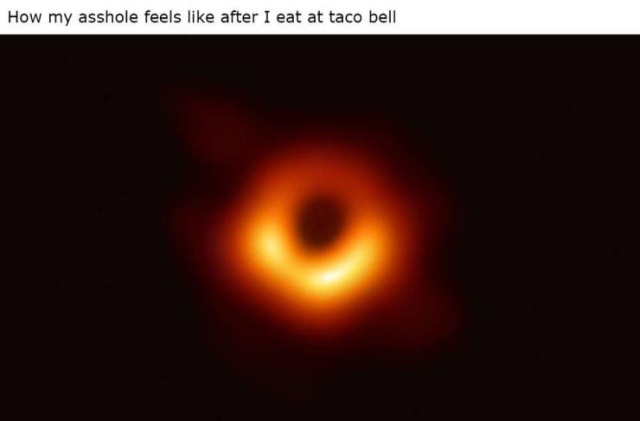

More uncertain are our explanations for the turbulence seen in the gas ring. "It's a great laboratory for trying to understand how gravity works in the vicinity of a supermassive black hole," Ghez said.Ī comparison of Event Horizon Telescope views of the black holes at the center of the galaxy M87, on the left, and of the one in the Milky Way, at right. "Our image is in very close agreement with theoretical predictions," said Özel, who described it as the biggest test of Einstein's theory of general relativity ever made, noting that the theory passed with flying colors. The new image shows that the size of Sagittarius A*'s event horizon is 51.8 microarcseconds on the sky. "The power of imaging the black hole's ring is that, if you know the mass and distance to the black hole - in other words, the size of the event horizon - then you can use that to compare to theory." Since the size of the event horizon is connected to the mass of the black hole, it was therefore possible to make a prediction, Ghez said. Ghez and her team calculated a mass that was 4.3 million times the mass of our sun. Ghez shared the 2020 Nobel Prize in Physics for measuring the mass of Sagittarius A* by observing the motions of stars orbiting close to it. (Image credit: ESO/José Francisco Salgado (), EHT Collaboration) "There's a lot of mysteries associated with the accretion flow, in terms of why it is so faint," she added.Ī collage shows the first image of the black hole at the center of the Milky Way at its location on the sky. Why the accretion of gas onto Sagittarius A* is so slow has been a puzzle for many years, Nobel Prize laureate Andrea Ghez, an astrophysicist at the University of California, Los Angeles, told. "In human terms, it would be like eating just one grain of rice every million years." "We only see a trickle of material making it all the way to the black hole," Harvard astrophysicist Michael Johnson said during the NSF press conference. However, Sagittarius A* is being starved. The black hole feeds from the material within its immediate environment, whether gas clouds, asteroids or even stars that might wander too close and be ripped apart by gravitational tides. The EHT is able to see light, in the form of radio waves, from hot gas swirling around the edge of the event horizon. Scientists call this "point of no return" the event horizon. "It took several years to refine the image and confirm what he had."īlack holes are the densest objects in the universe, and their gravity is irresistible, to the extent that within a certain distance of a black hole, not even light can escape. "Getting to this image wasn't an easy journey," Özel said. Lastly, whereas M87's black hole has a voracious appetite and appears bright because it is consuming a lot of gas, the flow of material onto Sagittarius A* is far more feeble, meaning it is much fainter. Moreover, gas and dust in the intervening 27,000 light-years between us and Sagittarius A* can scatter the submillimeter waves and blur the image. However, producing an image of Sagittarius A* proved more difficult than for M87.įor one thing, Earth's water-laden atmosphere can absorb the submillimeter radio waves that the EHT relies on. At the same time as it gathered the data that became that image, the EHT also performed observations of Sagittarius A*, which is the name given to the Milky Way's supermassive black hole. In 2019, the Event Horizon Telescope (EHT) made headlines when it succeeded in producing the first ever image of the event horizon of a black hole, specifically the black hole at the center of the active elliptical galaxy Messier 87.


 0 kommentar(er)
0 kommentar(er)
